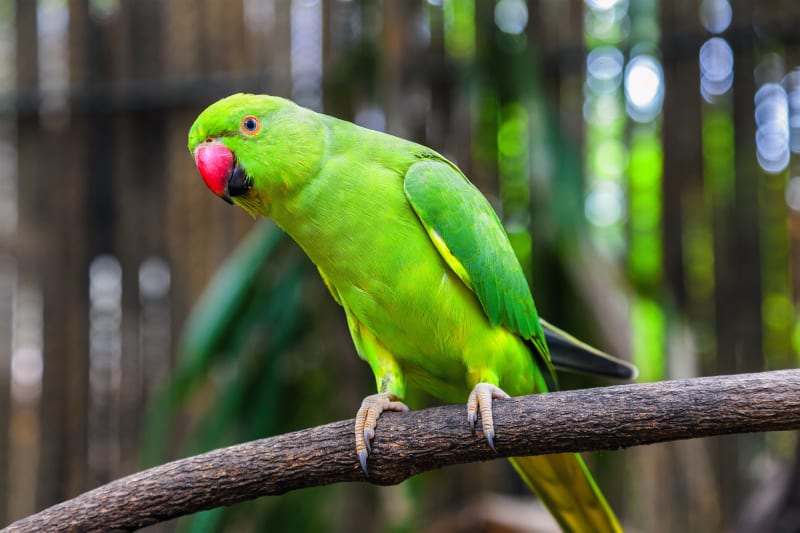
Essential Guide to Rabbit Foot Fern Care in 2025
Rabbit foot ferns, known for their unique furry rhizomes, are not just visually striking but also offer a plethora of benefits as indoor plants. In the evolving world of indoor gardening, understanding the essentials of rabbit foot fern care is crucial for maintaining healthy and vibrant plants throughout the seasons. This guide will cover various aspects of rabbit foot fern care, including watering, soil requirements, light exposure, humidity levels, fertilizing, repotting, and more to help you achieve optimal growth.
In recent years, there's been an increased interest in sustainable and pet-friendly plants, making rabbit foot ferns a popular choice for homes. Their resilience and adaptability also make them suitable for beginners and experienced plant caregivers alike. By the end of this article, you will have comprehensive rabbit foot fern care tips that ensure your indoor garden thrives.
Some key takeaways to look forward to include common issues you might face, effective pest control methods, and creative display ideas that elevate the beauty of these ferns in your living space.

Understanding Rabbit Foot Fern Soil Requirements
Choosing the right soil is foundational to rabbit foot fern care. These ferns thrive in well-draining soil that retains enough moisture without becoming waterlogged. A mix of potting soil, perlite, and orchid bark can provide the ideal balance of drainage and moisture retention, ensuring healthy growth.
Using a quality potting mix specifically formulated for ferns can significantly improve your rabbit foot fern's health. These specialized soils often contain nutrients that young ferns need for robust growth. When potting or repotting your fern, be sure to handle the roots carefully to avoid damage.
Additionally, consider the drainage of your plant pot. A pot with adequate drainage holes is essential to prevent root rot, a common issue facing rabbit foot ferns. Along with proper soil drainage, understanding and monitoring the moisture levels in your plant's environment will facilitate better care.
It's also beneficial to periodically check the pH levels of the soil. Rabbit foot ferns prefer slightly acidic conditions, typically between 5.5 and 6.5 in pH. Using pH testing kits can aid in maintaining the optimal conditions for your fern.
As you familiarize yourself with rabbit foot fern soil needs, you'll find that the right mix is foundational to preventing common rabbit foot fern problems, ensuring healthy foliage and robust growth.
Soil Types for Optimal Growth
When it comes to rabbit foot fern soil types, it’s vital to select a blend that mimics their natural habitat, typically forest floors filled with decaying leaf matter. Look for commercial fern mixes or consider creating a custom blend by combining potting soil with sphagnum moss and perlite.
In exploring organic options for rabbit foot fern care, using a nutrient-rich compost can infuse essential vitamins and minerals into the soil. This organic approach will bolster your fern's health while also aligning with eco-friendly gardening practices.
Watering Frequency and Techniques
Watering is a critical aspect of rabbit foot fern care and can significantly influence growth patterns. Understanding watering frequency is essential; these ferns thrive in consistently moist but well-drained conditions. Typically, the soil should be allowed to dry slightly between watering sessions, ensuring that the roots do not sit in standing water.
For rabbit foot fern watering techniques, it’s advisable to water thoroughly until excess moisture drains out from the bottom of the pot. Use room-temperature water to avoid shocking the plant. If you're uncertain about when to water, feel the top inch of the soil; if it feels dry, it's time to water again.
Taking note of environmental humidity levels is also crucial as high humidity can reduce the need for frequent watering. In contrast, during dry spells, you might need to increase watering frequency. Keeping the humidity levels optimal will directly impact your rabbit foot fern’s vitality and overall appearance.
Common Watering Mistakes
Several common rabbit foot fern care mistakes often arise concerning watering practices. Overwatering can lead to root rot, while underwatering may cause leaf browning and wilting. It's beneficial to adopt a consistent watering schedule based on the seasons and indoor climate to prevent adverse effects.
To foster successful watering habits, consider using a dampness meter to check moisture levels before watering, or simply observe the leaves. Healthy rabbit foot fern leaves should be vibrant and firm.
Light Requirements for Rabbit Foot Ferns
Proper light exposure is crucial for rabbit foot fern growth. They thrive in bright, indirect sunlight or dappled light, making them perfect candidates for placement near east or north-facing windows. Direct sunlight can scorch their delicate leaves, so be cautious about where you position your fern.
When determining the best light conditions for your rabbit foot fern, consider that while they can tolerate lower light levels, extended periods in dim spots might result in slower growth and leggy appearances. Understanding light spectrum for plants will allow you to optimize growth conditions for your fern.
Utilizing sheer curtains to diffuse harsher sunlight can help maintain an ideal lighting environment. Additionally, rotating the pot occasionally will promote even growth, resulting in a symmetrical and robust fern.
Adjusting Light Exposure Seasonally
Adjusting your fern’s light exposure seasonally can drastically improve its health. During the winter months, as natural light diminishes, consider moving your fern a bit closer to the light source or using grow lights to supplement its needs. This action can prevent issues linked to inadequate light and maintain growth consistency throughout the year.
Learn to pay attention to the rabbit foot fern's behavior as it responds to seasonal changes. For instance, if your fern starts to lose its vibrant green color or growth appears stunted, it might indicate insufficient light exposure.

Mistakes to Avoid in Rabbit Foot Fern Care
Even well-meaning plant caregivers can make mistakes in rabbit foot fern care. One common error is not paying attention to the humidity levels these ferns require. A dry environment can lead to crispy, brown leaf edges, commonly referred to as foliar burn. Ensure a humid environment is maintained, especially during winters when indoor air can be particularly dry.
Neglecting the need for repotting can also lead to unhealthy rabbit foot ferns. As your plant grows, it may outgrow its pot, leading to root binding. Every couple of years, inspect your fern’s roots and consider repotting if you notice a tightly packed root system.
Another critical mistake revolves around fertilization. Over-fertilizing can harm ferns, leading to excessive salt buildup in the soil. Understanding rabbit foot fern fertilizing guidelines allows you to provide the right amount and type of nutrients to support plant health.
Enhancing Growth with Proper Care
Proper rabbit foot fern care goes beyond just watering and soil; it involves understanding your fern's growth requirements and ensuring they are met consistently. Discover the variety of rabbit foot ferns available, each with its unique needs, and adapt your care practices off of those requirements. Additionally, staying aware of any pest infestations is vital for maintaining your fern’s health.
Implementing simple practices such as regular observance of leaf health, appropriate watering frequency, and seasonal adjustments to light exposure can significantly enhance rabbit foot fern growth. This proactive approach ensures your fern not only survives but flourishes in your indoor garden.
Rabbit Foot Fern Propagation Techniques
Learning how to propagate your rabbit foot fern can extend its life cycle and enhance its aesthetic presence in your home. The most common methods include division and sporulation. Each technique offers unique advantages and can help you create new plants to decorate your space.
For division, carefully take a mature fern and separate its rhizomes, ensuring that each division has sufficient roots and foliage. This method is particularly effective in spring when the plant is in its active growth phase. The newly divided plants should be potted up and watered generously.
Sporulation is another method wherein you can collect the spores from the fern’s sporangia located on the underside of the leaves. This can be a more time-consuming method but can yield multiple ferns once established. Keeping the spores moist and providing them with suitable light conditions fosters successful germination.
Aftercare Post-Propagation
Post-propagation, it's essential to monitor your new plants closely. Ensure they receive adequate light, humidity, and water while they acclimatize to their new conditions. Initially, keep young ferns in a sheltered, humid location to help them establish.
Common issues with rabbit foot fern propagation, such as leaf loss or stunted growth, can often be remedied by adjusting environmental factors. The aim is to mimic their natural habitat as closely as possible to support their growth efficiently.
By employing effective propagation techniques, you not only increase your plant collection but also contribute to a more vibrant indoor environment while experiencing the joy of rabbit foot fern care firsthand.
Pest Control for Rabbit Foot Ferns
Much like other houseplants, rabbit foot ferns can succumb to pests, which may affect their health and aesthetic appeal. Common pests include spider mites, mealybugs, and aphids. Prompt identification and action are imperative for effective pest control.
Regular inspections for signs of insect activity, such as webs or white cottony masses on the leaves, will help in early detection. Once identified, utilize organic pest control solutions like insecticidal soap or neem oil, ensuring to follow application instructions for safe use on your ferns.
Preventative measures are equally important. Maintaining optimal humidity levels not only aids in growth but also reduces the likelihood of pest infestations as many pests thrive in dry conditions. Furthermore, regularly cleaning the leaves with a damp cloth can deter pests before they establish residence on the plant.
Recognizing Rabbit Foot Fern Diseases
Aside from pests, diseases can threaten rabbit foot ferns. Fungal infections might arise from excessive moisture or poor air circulation. Keeping your ferns in areas with good airflow and avoiding overwatering helps mitigate these risks.
Common rabbit foot fern diseases like root rot occur when the roots sit in soggy soil for extended periods. To prevent and manage root rot, ensure that your pot has adequate drainage and refrain from watering too frequently.
Seasonal Care Adjustments
As seasons change, so does your rabbit foot fern's care requirements. During winters, when light levels drop, consider supplemental lighting or positioning your fern closer to light sources. In summer, deepen your understanding of rabbit foot fern care by observing how the plant reacts to increased heat and light exposure.
In brief, being attentive to changing conditions throughout the seasons will aid in sustaining healthy rabbit foot ferns and enhancing their growth potential. Use the seasonal adjustments as a guide to constantly refine your rabbit foot fern care approach.
Common Frequently Asked Questions About Rabbit Foot Ferns
What are the general light requirements for rabbit foot ferns?
Rabbit foot ferns prefer bright, indirect light. They can tolerate lower light levels, but optimal growth occurs in filtered sunlight, mimicking their natural habitat.
Can I use regular potting soil for rabbit foot ferns?
While you can use regular potting soil, it’s best to opt for a well-draining mixture tailored for ferns to ensure appropriate moisture retention and drainage.
How can I tell if my rabbit foot fern needs more humidity?
If you notice leaf tip browning or crispy edges, it may indicate insufficient humidity levels. Increasing ambient humidity can rectify these issues.
When should I repot my rabbit foot fern?
Repotting should be considered every couple of years or when you observe significant root growth, indicating that the plant has outgrown its pot.
Is rabbit foot fern pet-friendly?
Yes, rabbit foot ferns are generally considered non-toxic to pets, making them a great option for households with animals.
Conclusion and Key Takeaways
Caring for rabbit foot ferns can be incredibly rewarding. Their unique beauty enhances indoor spaces, while their adaptability makes them a viable option for both novice and experienced gardeners. By understanding their needs regarding soil, light, humidity, and pest control, you can cultivate healthy rabbit foot ferns that thrive throughout the year.
Remember to regularly assess and adjust your care strategies as seasons change and staff your knowledge base with helpful rabbit foot fern care FAQs to bolster your confidence. Happy gardening!